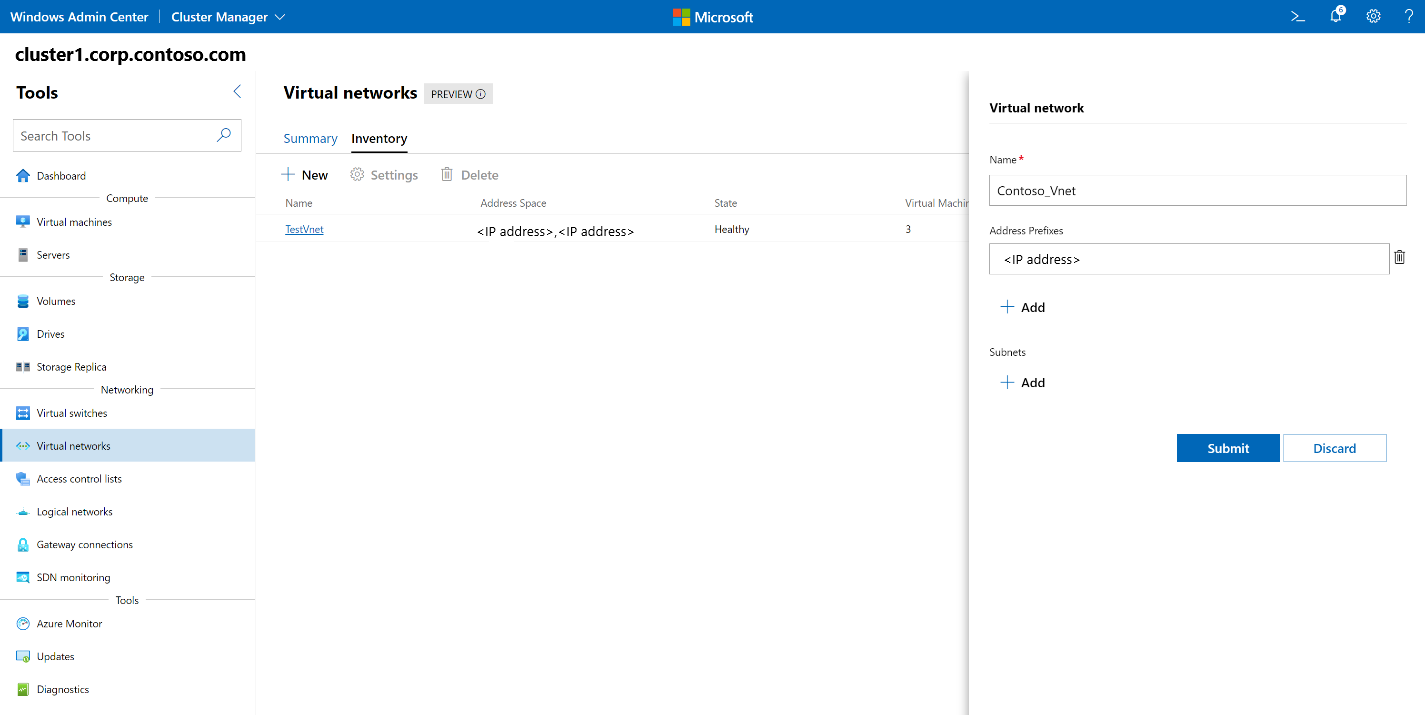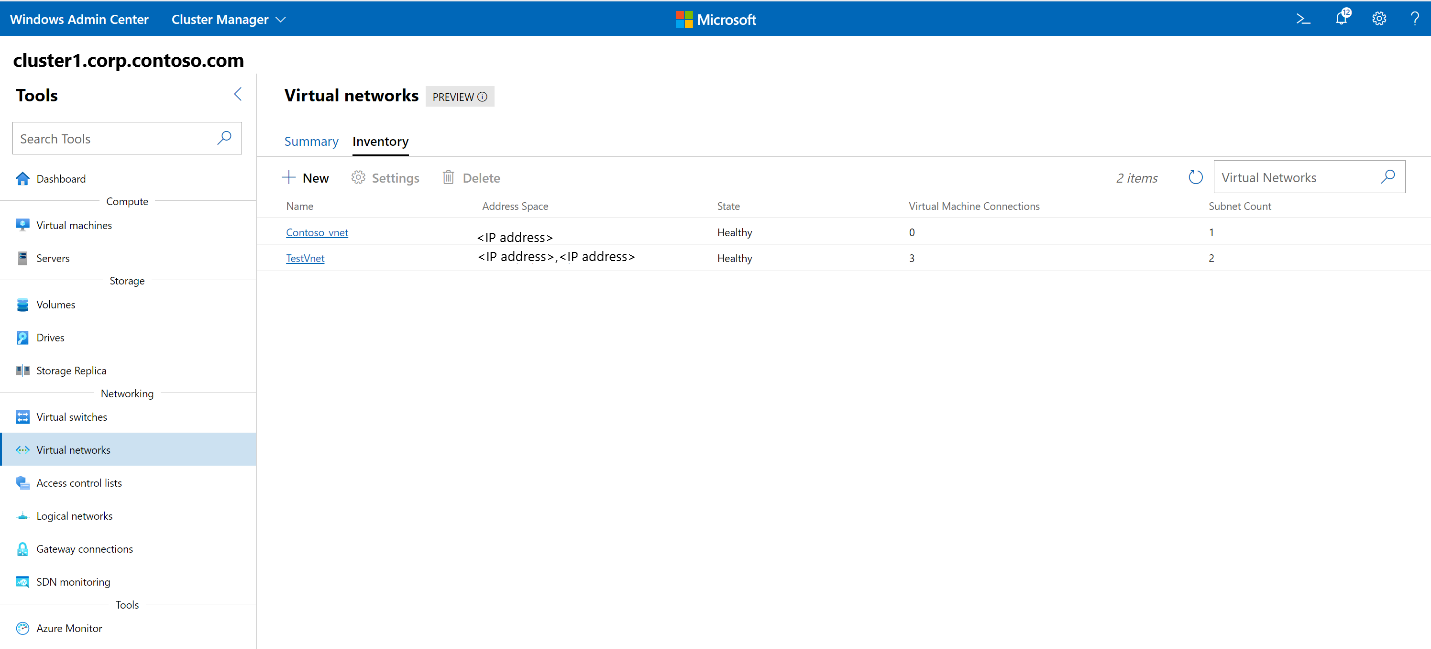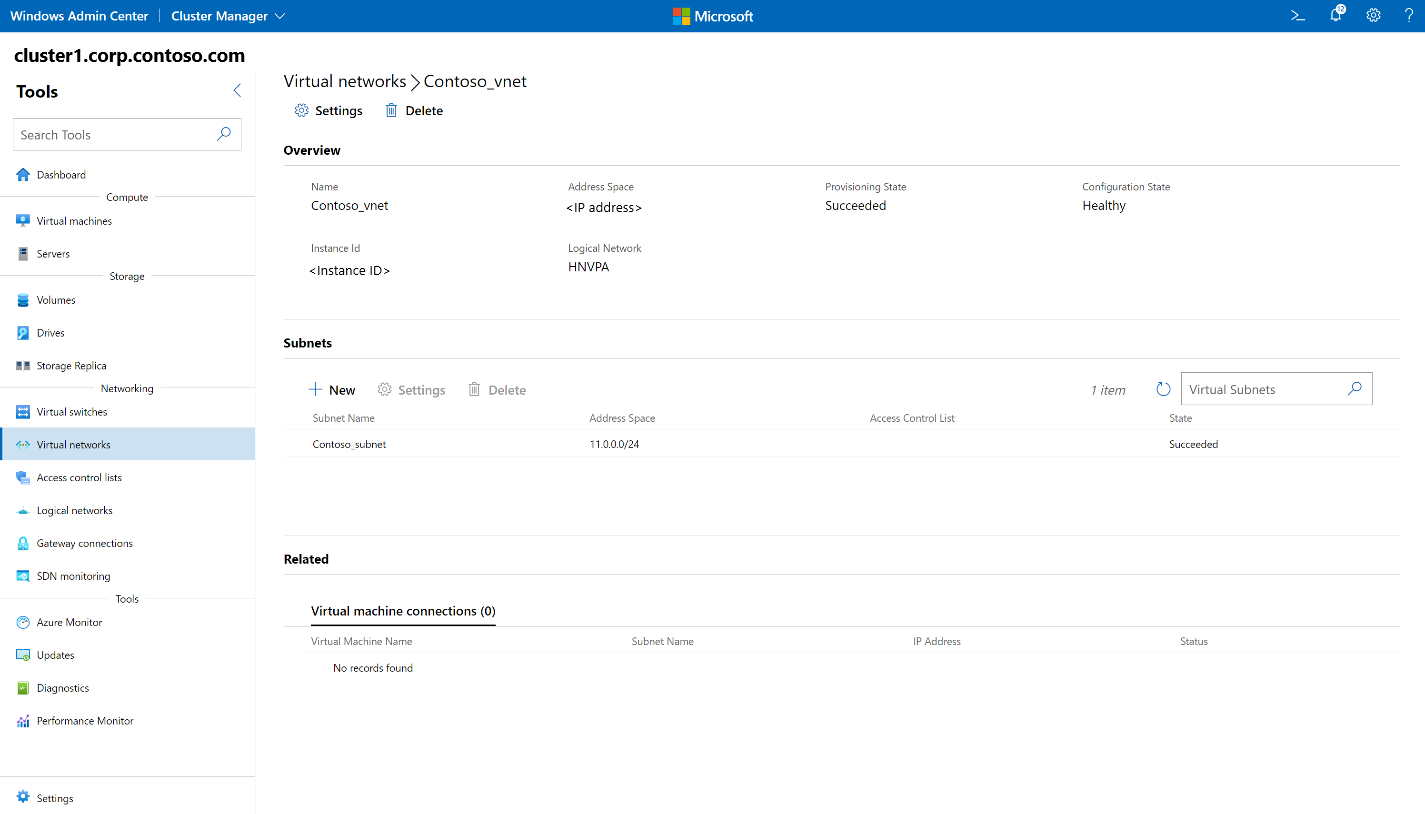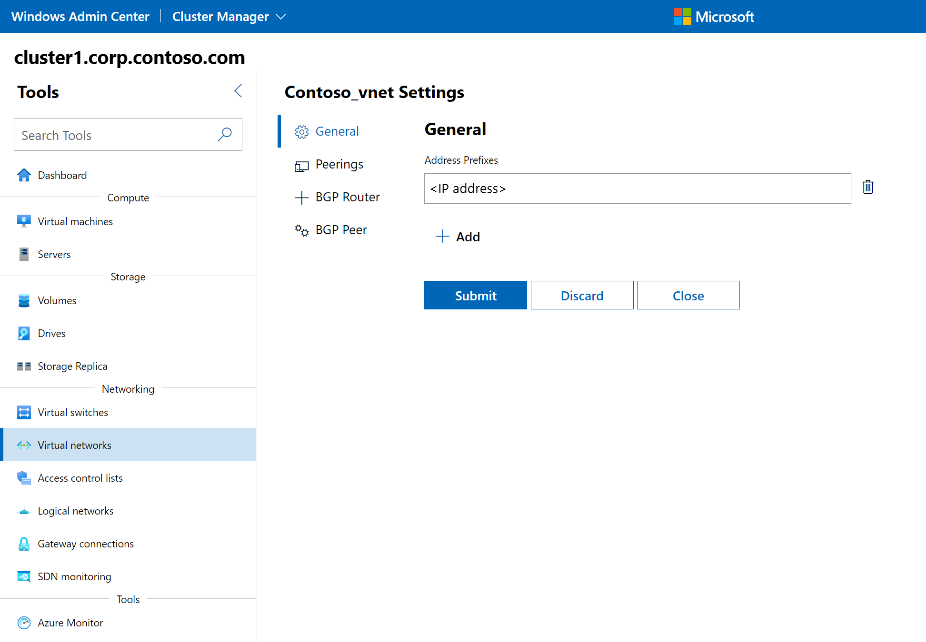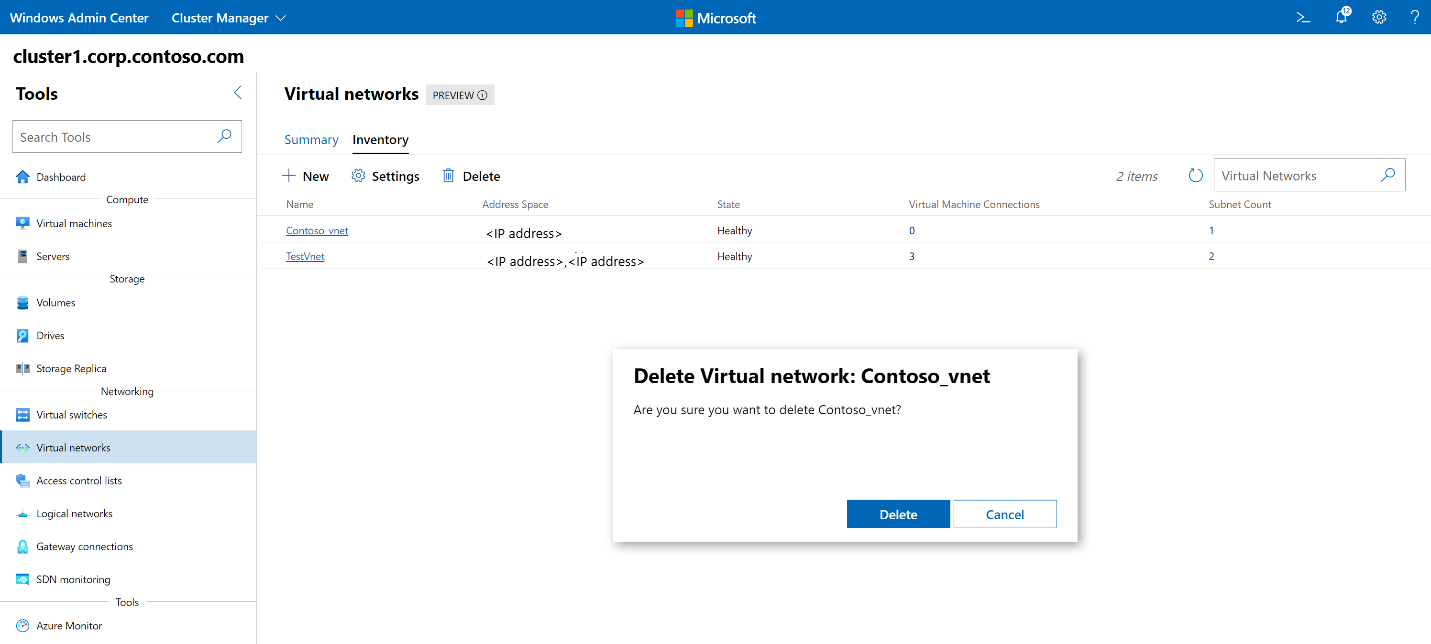Manage tenant virtual networks
Applies to: Azure Stack HCI, versions 22H2; Windows Server 2022, Windows Server 2019, Windows Server 2016
This topic provides step-by-step instructions on how to use Windows Admin Center to create, update, and delete Hyper-V Network Virtualization (HNV) virtual networks after you have deployed Software Defined Networking (SDN).
HNV helps you isolate tenant networks so that each tenant network is a separate entity. Each entity has no cross-connection possibility, unless you either configure public access workloads or peering between virtual networks.
Create a virtual network
Use the following steps in Windows Admin Center to create a virtual network.
On the Windows Admin Center home screen, under All connections, select the cluster that you want to create the virtual network on.
Under Tools, scroll down to the Networking area, and select Virtual networks.
Under Virtual networks, select the Inventory tab, and then select New.
In the Virtual networks pane, type a name for the virtual network.
Under Address Prefixes select Add, and then type an address prefix in Classless Interdomain Routing (CIDR) notation. You can optionally add more address prefixes.
Under Subnets, select Add, type a name for the subnet, and then provide an address prefix in CIDR notation.
Note
The subnet address prefix must be within the address prefix range that you defined in Address Prefixes of the virtual network.
Select Submit or optionally add more subnets and then select Submit.
In the Virtual networks list, verify that the state of the virtual network is Healthy.
Get a list of virtual networks
You can easily see all the virtual networks in your cluster.
- On the Windows Admin Center home screen, under All connections, select the cluster on which you want to view virtual networks.
- Under Tools, scroll down to the Networking area, and select Virtual networks.
- The Inventory tab lists all virtual networks available on the cluster, and provides commands to manage individual virtual networks. You can:
- View the list of virtual networks.
- View virtual network settings, the state of each virtual network, and the number of virtual machines (VMs) connected to each virtual network.
- Change the settings of a virtual network.
- Delete a virtual network.
View virtual network details
You can view detailed information for a specific virtual network from its dedicated page.
- Under Tools, scroll down to the Networking area, and select Virtual networks.
- Select the Inventory tab, and then select the virtual network that you want to view details on. On the subsequent page, you can:
- View the Provisioning State of the virtual network (Succeeded, Failed).
- View the Configuration State of the virtual network (Healthy, Error, Warning, Unknown).
- View the underlying Logical Network of the virtual network.
- View the Address Space of the virtual network.
- Add new subnets, delete existing subnets, and modify the settings of a virtual network subnet.
- View Virtual machine connections to the virtual network.
Change virtual network settings
You can update virtual network address prefixes, manage virtual network peering, and configure a Border Gateway Protocol (BGP) router and peers for the virtual network.
- Under Tools, scroll down to the Networking area, and select Virtual networks.
- Select the Inventory tab, select a virtual network, and then select Settings.
- On the General tab, you can:
- Remove existing address prefixes or add new ones.
- Configure peering with another virtual network.
- Add a BGP router to the virtual network. To do so, you need to provide the BGP router name and Autonomous System Number (ASN) number.
- Add one or more BGP peers for the BGP router. To do so, you need to provide each BGP peer name, and the ASN number for each BGP peer.
Delete a virtual network
You can delete a virtual network if you no longer need it.
- Under Tools, scroll down to the Networking area, and select Virtual networks.
- Select the Inventory tab, select a virtual network, and then select Delete.
- On the Delete virtual network confirmation prompt, select Delete.
- Next to the Virtual networks search box, select Refresh to ensure that the virtual network has been deleted.
Next steps
For more information, see also:
